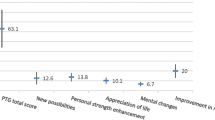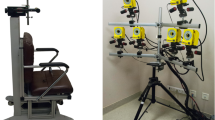Summary
To observe the differences in psychological status between Bell’s palsy (BP) patients and healthy subjects, and to examine the relationship between psychological factors and the severity of BP, we conducted a case-control, multi-center clinical investigation. A total of 695 subjects were assigned to the case group (n=355) and the control group (n=340). House-Brackmann grading system and Facial Disability Index (FDI) were adopted to assess the BP patients; Kessler Psychological Distress Scale (K10) and 16 Personality Factor (16PF) scale were employed to evaluate the psychological distress and personality profiles of all subjects. Two independent samples t test was used to compare the differences between cases and controls, and to compare the differences among different BP patients. Pearson correlation analysis was used to examine the relationship between psychological factors and severity of facial paralysis. The results showed that psychological distress (K10) in case group (27.09±5.80) was significantly higher than that in control group (13.43±3.02) (t=−37.219, P=0.000). The scores of personality factor Warmth (A), Openness to Change (Q1), Self-Reliance (Q2) were lower in cases than in the controls (P<0.01, P<0.05, P<0.05, respectively), whereas the scores of Sensitivity (I), Vigilance (L), Apprehension (O), and Tension (Q4) were significantly higher in cases than in the controls (P<0.05, P<0.01, P<0.01, P<0.01, respectively). In addition, the psychological distress was significantly higher in female patients, severe (HB score IV–VI) patients, and subacute (onset time 72–168 h) patients compared with that in male patients, mild (HB score I–III)patients, and acute (onset time⩽72 h) patients (P<0.05). The scores of personality factor in female patients, severe patients, and subacute patients were also significantly different from male patients, mild patients, and acute patients (P<0.05). The result of Pearson correlation analysis showed that psychological factors (K10, personality A, F, L, N, O, Q4) were closely related to HB scores. We are led to conclude that the psychological status between BP patients and healthy people are different; psychological distress and personality factors are closely associated with severity of facial paralysis.
Similar content being viewed by others
References
Gilden DH, Clinical practice. Bell’s Palsy. N Engl J Med, 2004, 351(13):1323–1331
Sullivan FM, et al. Early treatment with prednisolone or acyclovir in Bell’s palsy. N Engl J Med, 2007,357(16):1598–1607
Kuga M, Ikeda M, Kukimoto N, et al. An assessment of physical and psychological stress of patients with facial paralysis. Nihon Jibiinkoka Gakkai Kaiho (Japanese), 1998,101(11):1321–1327
Siol T, Huber M, Buchner H. Posttraumatic Bell’s palsy. Am J Psychiatry, 2001, 158(2):322
Kosins AM, Hurvitz KA, Evans GR, et al. Facial paralysis for the plastic surgeon. Can J Plast Surg, 2007, 15(2):77–82
Cross T, Sheard CE, Garrud P, et al. Impact of facial paralysis on patients with acoustic neuroma. Laryngoscope, 2000,110(9):1539–1542
Van Swearingen JM, Cohn JF, Turnbull J, et al. Psychological distress: linking impairment with disability in facial neuromotor disorders. Otolaryngol Head Neck Surg, 1998,118(6):790–796
Sugiura M, Niina R, Ikeda M, et al. An assessment of psychological stress in patients with facial palsy. Nippon Jibiinkoka Gakkai Kaiho (Japanese), 2003,106(5):491–498
Macgregor FC. Facial disfigurement: problems and management of social interaction and implications for mental health. Aesthetic Plast Surg, 1990,14(4):249–257
Robinson E, Rumsey N, Partridge J. An evaluation of the impact of social interaction skills training for facially disfigured people. Br J Plast Surg, 1996,49(5):281–289
Lansdown R, Rumsey N, Bradbury E (eds). et al. Visibly different: coping with disfigurement Oxford: Butterworth-Heinemann, 1997
Hirschenfang S, Shulman L, Benton JG. Psychosocial factors influencing the rehabilitation of the hemiplegic patient. Dis Nerv Syst, 1968,29(6):373–379
Hirschenfang S, Silber M, Benton JG. Personality patterns in peripheral neuropathy. Dis Nerv Syst, 1968, 29(1):46–50
Silber M, Hirschenfang S, Benton JG. Psychological factors and prognosis in peripheral neuropathy. Dis Nerv Syst, 1968,29(10):688–692
Kahana, RJ. Studies in medical psychology: a brief survey. Psychiatry Med, 1972,3(1):1–22
Mei JH, Gao S, Chen GH. Relationship between neuro-psychological factors and effect of acupuncture in treating Bell’s palsy. Zhongguo Zhong Xi Yi Jie He Za Zhi (Chinese), 2010,30(10):1026–1029
House JW, Brackmann DE. Facial nerve grading system. Otolaryngol Head Neck Surg, 1985,93(2):146–147
Van Swearingen, JM, Brach JS. The Facial Disability Index: reliability and validity of a disability assessment instrument for disorders of the facial neuromuscular system. Phys Ther, 1996,76(12):1288–1298
Kessler RC Andrews G, Colpe LJ, et al. Short screening scales to monitor population prevalences and trends in non-specific psychological distress. Psychol Med, 2002, 32(6):959–976
Kessler RC, Barker PR, Colpe LJ, et al. Screening for serious mental illness in the general population. Arch Gen Psychiatry, 2003, 60(2):184–189
Mackinnon A, Jorm AF, Hickie IB. A National Depression Index for Australia. Med J Aust, 2004, 181(7 Suppl):S52–S56
Canada Statistics, Canadian Community Health Survey cycle 1. 2: mental health and wellbeing. Catalogue No. 82M0021GPE. Ottowa: Ministry of Industry, 2004
Canada Statistics, National Population Health Survey household component cycle 1 to cycle 7 (1994/95 to 2006/07). Longitudinal Documentation 2008. Ottowa: Statistics Canada, 2008
Andrews G, Slade T. Interpreting scores on the Kessler Psychological Distress Scale (K10). Aust N Z J Public Health, 2001,25(6):494–497
Cattell RB, Cattell AK, Cattell HE. Sixteen Personality Factor Questionnaire (5th ed). Champaign, IL: Institute for Personality and Ability Testing, 1993
Russell MT, Karol DL. The 16PF fifth edition administrator’s manual. Champaign, IL: Institute for Personality and Ability Testing, 1994
Krug SE, Johns EF. The 16 Personality Factor Questionnaire. In: Watkins CE, Campbell BL (eds). Testing and Counseling Practice. Mahwah, NJ: Lawrence Erlbaum Associates, 1990,63–90
Coulson SE, Croxson GR, Adams RD, et al. Reliability of the “Sydney”, “Sunnybrook”, and “House Brackmann” facial grading systems to assess voluntary movement and synkinesis after facial nerve paralysis. Otolaryngol Head Neck Surg, 2005, 132(4):543–549
Ross BG, Fradet G, Nedzelski JM. Development of a sensitive clinical facial grading system. Otolaryngol Head Neck Surg, 1996, 114(3):380–386
Bradbury ET, Simons W, Sanders R. Psychological and social factors in reconstructive surgery for hemi-facial palsy. J Plast Reconstr Aesthet Surg, 2006, 59(3):272–278
Kiecolt-Glaser JK, Preacher KJ, MacCallum RC, et al. Chronic stress and age-related increases in the proinflammatory cytokine IL-6. Proc Natl Acad Sci USA, 2003, 100(15):9090–9095
Yilmaz M, Tarakcioglu M, Bayazit N, et al. Serum cytokine levels in Bell’s palsy. J Neurol Sci, 2002, 197(1–2):69–72
Black PH. Stress and the inflammatory response: a review of neurogenic inflammation. Brain Behav Immun, 2002, 16(6):622–653
Glaser R, Friedman SB, Smyth J, et al. The differential impact of training stress and final examination stress on herpesvirus latency at the United States Military Academy at West Point. Brain Behav Immun, 1999, 13(3):240–251
Kiecolt-Glaser JK, McGuire L, Robles TF, et al. Psychoneuroimmunology and psychosomatic medicine: back to the future. Psychosom Med, 2002, 64(1):15–28
Lindova J, Novotna M, Havlicek J, et al. Gender differences in behavioural changes induced by latent toxoplasmosis. Int J Parasitol, 2006, 36(14):1485–1492
Manuel RS, Borges NJ, Gerzina HA. Personality and clinical skills: any correlation? Acad Med, 2005, 80(10 Suppl):S30–S33
Capitanio, JP. Personality and disease. Brain Behav Immun, 2008, 22(5):647–50
Author information
Authors and Affiliations
Corresponding authors
Additional information
The study was supported by a research grant from the National Basic Research Program of China (No. 2006CB-504502).
Rights and permissions
About this article
Cite this article
Huang, B., Xu, S., Xiong, J. et al. Psychological factors are closely associated with the Bell’s palsy: A case-control study. J. Huazhong Univ. Sci. Technol. [Med. Sci.] 32, 272–279 (2012). https://doi.org/10.1007/s11596-012-0048-0
Received:
Published:
Issue Date:
DOI: https://doi.org/10.1007/s11596-012-0048-0




